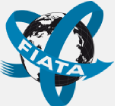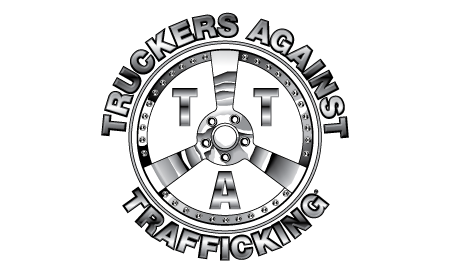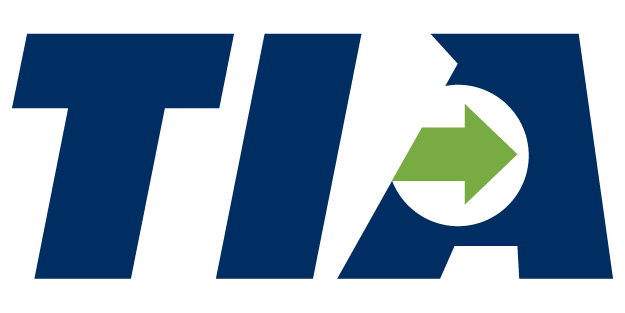FMCSA has granted a waiver to CDL and CLP holders who have experienced issues with obtaining access to DMV offices and to medical examiners, many of whom are refusing to take appointments for DOT physicals due to contamination concerns. The waiver extends the date of expiration – until June 30 – of applicable CDLs, CLPs, and non-CDL licenses of commercial drivers, as well as medical certificates that would otherwise expire between March 1 and June 30.
Author: NHUMPHREY
TIA Daily COVID-19 Update – March 24th (Morning Edition)
As TIA continues to monitor the situation surrounding COVID-19 and it’s impact on the 3PL and transportation industries, here is your Morning Update for March 24. As a reminder, you can find all the latest information, resources, guidance, and news from TIA’s COVID-19 Response Center.
CVSA ROAD CHECK UPDATE
TIA has written FMCSA to postpone the annual CVSA Road Check. What we don’t need right now is anything else impeding the flow of needed goods to market.
We are hearing from members that, while the rest areas are open, the states are using port-a-johns rather than opening and keeping restrooms clean. We are working with the allied trucking industry to correct this travesty.
If we are asking truckers to keep us fed and in toilet paper, the least we can do is provide them with clean, safe bathrooms. Maybe the politicians should stop jumping in front of microphones and grab a mop.
CONGRESSIONAL UPDATE:
We continue to pound the Senate to act and act now to help American businesses. The Wall Street Journal this morning took our “leaders” to task:
• The Pelosi-Schumer Coronavirus Contagion
• Workers of the World Need Employers
American business can lead us out of this mess, but only if Congress steps in immediately to help businesses maintain payroll and pay their rent. This is not the time for political gamesmanship or for pushing political agendas.
OPERATIONAL NEEDS SURVEY
We sent a survey out to you last night, looking for insights into your operational needs during COVID-19. It will take just 30-seconds to complete and we’ll get the results back to you tonight.
———————————-
Depending on developments throughout the day, we’ll be back with an Afternoon Edition with additional COVID-19 updates and information. Otherwise, we’ll back tomorrow morning.
Until then, enjoy Count Bassie’s “You Can Count on Me.”
TIA DAILY COVID-19 UPDATE – MARCH 23TH (AFTERNOON EDITION)
As TIA continues to monitor the situation surrounding COVID-19 and it’s impact on the 3PL and transportation industries, here is your morning update for March 23:
MARCH ECONOMIC FORECAST:
Noël Perry is TIA’s Chief Economist, providing exclusive in-depth analysis to TIA members, with an emphasis on truckload, rail, intermodal, and domestic water markets. Download a copy of Perry’s March 2020 Forecast now and position your company to survive the current state of the industry.
FREE COVID-19 WEBINAR FOR TIA MEMBERS:
TIA is a member of the Small Business Legislative Council (SBLC), who are experts in the human resources and tax arenas. As part of our membership with SBLC, there are several free webinars for our members throughout the year on a variety of topics.
In response to the COVID-19 pandemic and the changes to the Family Medical Leave Act and federal Sick Leave policies, SBLC will be holding a free webinar tomorrow to update small businesses on these pending changes.
Specifically, this webinar will address the difficult issues that small businesses are facing in light of the COVID-19 threat, particularly when it comes to managing employees and business closures. This will include providing an overview of the new and existing laws that businesses will need to navigate during this unprecedented time. We will also leave ample time for Q&A.
The webinar will be presented by the SBLC’s Strategic Policy Director, Jessica Summers, Esq., who is also a Principal in the Employment Law Group at the Law Firm of Paley Rothman in Bethesda, MD.
The webinar will be held on March 24, 2020, at 12:30 PM EDT. When asked which association you are attending on behalf of, please indicate Transportation Intermediaries Association (TIA) in order to view the webinar for free.
After registering, you will receive a confirmation email containing information about joining the webinar. If you have any questions, please contact [email protected].
TAX UPDATE:
On Tuesday, Treasury Secretary Mnuchin announced that the IRS and the Treasury would defer federal income tax payments up to $1 million for individuals and other unincorporated entities and up to $10 million for corporations from April 15 until July 15. It has now been confirmed that filings and payments can both be filed by the new July 15 date.
———————————-
We’ll be back this afternoon around 4:00 PM ET with the latest COVID-19 updates and information.
Here’s Artie Shaw’s Traffic Jam to Kickstart Week #2 of Social Distancing.
Off to the Races: Top 5 House Races
There are less than 240 days until the 2020 Presidential Election and while it is becoming clearer who the Democratic challenger to President Trump might be whether it be Senator Bernie Sanders or former Vice President Joe Biden, the battle for the House is heating up. In the next blog, we will examine the candidates view on transportation and infrastructure investment, but I leave you with this one tidbit for the Presidential race to keep a close eye on especially in those key swing states of Pennsylvania, Michigan, Ohio and North Carolina, look at the primary voting in terms of turnout, it matters!
On to the House, we are going to take a quick look at the Top 5 House races to watch in the 2020 election, which could possibly determine which party controls the House in 2021.
Oklahoma 5th District
This was truly one of the most surprising upsets in the 2018 election, where Congresswoman Kendra Horn (D-OK-5) defeated two-term incumbent Steve Russell (R-OK-5) by one percentage point. This truly stands out when you look at the fact that President Trump won the district by 31 points in 2016. Congresswoman Horn is the first Democrat to represent this district in over 40-years. The Republican Party is awaiting their primary to determine which candidate emerges as her opponent. The two front runners appear to be state Senator Stephanie Bice and businesswoman Terry Neese. A number of campaign and political experts mark this as a tossup race. My prediction is Republicans regain this seat because President Trump is on the ticket.
California 50th District
This is the seat previously held by Congressman Duncan Hunter (R-CA-50), who recently resigned for corruption and pleaded guilty for misusing campaign funds. California has a unique primary system, where the top two vote-getters are placed on the ballot in November. The primary was on March 3rd (Super Tuesday), and it appears that Ammar Campa-Najjar (D) and former Congressman Darrell Issa (R) who served in the House from a neighboring district beginning in 2001 until his recent retirement in 2019 will be on the ticket. Mr. Campa-Najjar (D) previously ran for this seat against Congressman Duncan Hunter in 2018 and lost by almost 9,000 votes. He was the first Latino-Arab American to run for Congress and is a former staffer for the Obama Administration. My prediction is Republicans narrowly win and retain the seat. It is a strong Republican district, but President Trump remains unpopular in California. How the cloud over Congressman Duncan Hunter pleading guilty to misusing campaign funds will play in the race remains to be seen.
South Carolina 1st District
Congressman Joe Cunningham (D-SC-1) narrowly won a longtime Republican seat in the Charleston area (one of my favorite places for sure), in part by running on a strong campaign message and pledge to oppose offshore drilling, which lead to his defeat of Katie Arrington (R-SC-1) by one percentage point in 2018. Ms. Arrington defeated the incumbent Congressman Mark Sanford (R-SC-1) and former Governor of South Carolina in the 2018 primary. President Trump won this district by 11 points in 2016 and he is likely to face businesswoman Nancy Mace (R) who was the first female to graduate from The Citadel in 1999. She has received financial support from the National Republican Congressional Committee (NRCC) and is seen as a top-tier candidate. On the other hand, Vice President Biden did extremely well in South Carolina and the Democratic primary saw a high turnout rate, which certainly bodes well for Congressman Cunningham. My prediction is Republicans retake this seat with Nancy Mace (assuming she wins the primary on June 9th), narrowly defeating Rep. Cunningham thanks to President Trump being on the ticket.
New York 11th District
Congressman Max Rose (D-NY-11) defeated two-term incumbent Congressman Dan Donovan (R-NY-11) in 2018 by six percentage points. Congressman Rose served in the U.S. Army as a platoon leader in the War in Afghanistan, where he was wounded and received a Bronze Star and Purple Heart. President Trump won this district in 2016 by 10 points. Republicans seem to be rallying behind Nicole Malliotakis (R) who is a member of the New York State Assembly, where she has represented the 64th district for seven years. When Ms. Malliotakis ran mayor of New York City in 2017, she won the 11th district. Congressman Rose is considered a moderate member of the Democratic party and was one of the last House Members to support the impeachment inquiry into President Trump. It will remain interesting to see if that hurts him in November. My prediction is Democrats retain this seat with Congressman Rose narrowly defeating his Republican challenger.
Utah 4th District
Finally, Utah’s 4th Congressional district, where current Congressman Ben McAdams (D-UT-4) narrowly defeated two-term incumbent Congresswoman Mia Love (R-UT-4) by 0.3 points (or less than 700 votes)! President Trump won the State of Utah with 45.5 percent of the vote, which is a little misleading as Independent candidate Evan McMullin (and Utah native) receiving 21.5 percent of the vote and Hillary Clinton receiving 27.5 percent. There are several candidates running for the seat on the Republican side and we won’t know who the candidate is until June 30th. I think with the name recognition that Congressman McAdams has makes him a difficult challenger. My prediction is Democrats retain this seat, giving Democrats a win in the State of Utah on election night.
Overall, Republicans need 19 seats to regain control of the House – with that number really being closer to 21, as Republicans are set to lose two seats in North Carolina because of redistricting. My prediction for the whole House is that Republicans will certainly make it a race on election night but might come up just short of regaining control of the House. With that being said, I think President Trump gets reelected and could push them over the top. Grab the popcorn and wait and see…
Day One Success at Sold Out TIA Technovations Conference #TIA2019TECH
TIA’s 3PL Technovations Conference kicked off with a continental breakfast followed by opening remarks from TIA Chairman of the Board, Brian Evans, CTB; Technology Committee Chair, Ramona Hood; and TIA President and CEO Bob Voltmann. Following opening remarks, the morning of Day 1, ranged from panels and thought leaders on transportation, technology, and cybersecurity.

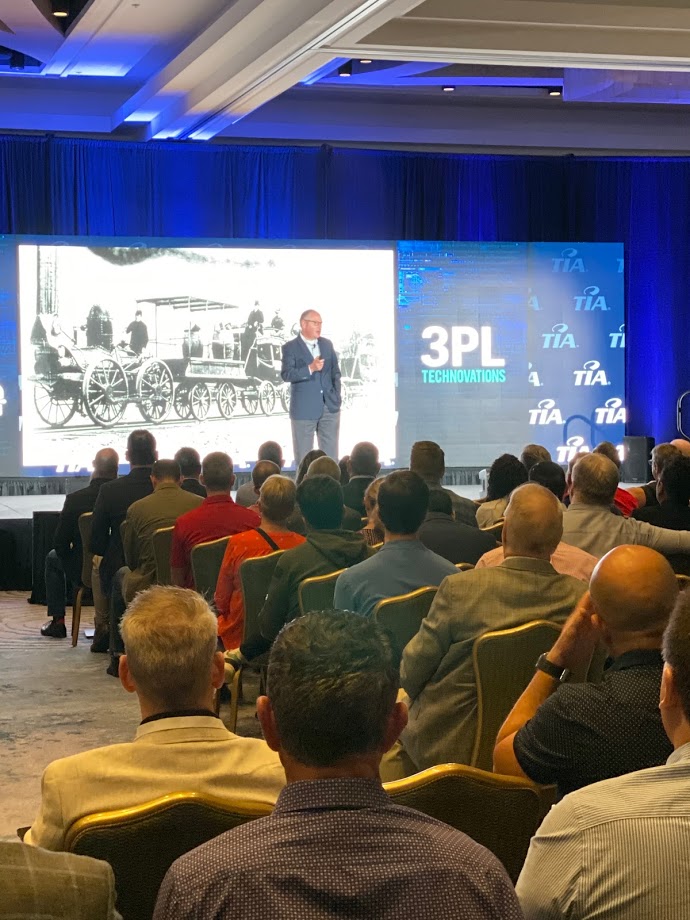
The conference features three Showcases with presenters giving a “TECH TALK” on innovations that will advance the industry. Sessions are led by leading 3PLs, futurists, innovators, and industry analysts for attendees to implement, understand, and take control of the technology changes affecting your business.
Some of the top takeaways from day one include:
- Cybercriminals have been and are emerging as major threats to the transportation and third-party logistics industries. Each year and each minute, cyber-attacks are becoming increasingly sophisticated, and proper measures must be taken to protect your business.
- Acquiring large quantities of freight data can provide new and exciting opportunities for the third-party logistics industry. Enhancements in Freight Visibility can create a smoother supply chain and ultimately cut costs and strengthen the position of the 3PL.
- With the advancements in technology, in a rapidly changing field, 3PLs need to be ready to invest in technology and solutions that work well with all stops on the assembly line. Automation and digitization have the potential to create high levels of efficiency and ultimately eliminate repetitive tasks.
We are thrilled for the kickoff of Day 2 beginning with a forecast of 2020 from TIA’s chief economist, Noël Perry. Followed by an outstanding panel to discuss and review the existing marketplace, and its regulatory, legal and transactional hurdles, and provide insight on why some companies choose acquisitions and others do no not.
Chris on the Hill: Matt and Chris in the Big Apple

I have the pleasure to co-write this Chris on the Hill with my colleague Matt Mantione who is TIA’s Vice President of Membership. On Friday, November 1st, Matt and I traveled to the Big Apple, New York City, to host the first-ever TIA Member Plug-in Event with our cohost Transfix. The event was a huge success where TIA Members and potential Members were able to network and make business connections with their local peers.

When Matt and I were recently talking about hosting a regional networking event for our Members, we wanted to make sure that we facilitated an event that appealed to Members and prospect members. One of our goals was to fill that gap between TIA’s big three annual conferences, the Annual Conference in April, the Policy Forum (Fly-in) in June and the TIA Technovations Conference in November. We completely understand that not all Members have the time and resources to attend these conferences and the TIA Member.
Plug-in Events could hopefully provide a venue to fill that void and allow those Members an opportunity to network with their peers and meet with TIA staff members.
 The TIA Member Plug-in Event in New York allowed us the opportunity to briefly update the group on the Association and the current state of play in Washington, DC, including the legislative and regulatory environments. Additionally, TIA raffled off a complimentary full registration to the 2020 Policy Forum in June (a $400 value!), and congratulations to Mackenzie McGowan of Kinetic-Supply Chain Solutions for being the big winner!
The TIA Member Plug-in Event in New York allowed us the opportunity to briefly update the group on the Association and the current state of play in Washington, DC, including the legislative and regulatory environments. Additionally, TIA raffled off a complimentary full registration to the 2020 Policy Forum in June (a $400 value!), and congratulations to Mackenzie McGowan of Kinetic-Supply Chain Solutions for being the big winner!
After the event, PJT Logistics’ Michael Mecca, had this to say, “The plug-in event in New York City hosted by TIA was a tremendous experience. It’s so nice to loosen up the collar in a relaxed and casual setting after a hard day at the office connecting with great people in our industry. This event brought back the good old days of Happy Hour on a Friday to a new level! Networking with other members that are locally domiciled in my region is a brilliant idea/opportunity offered by the TIA.”
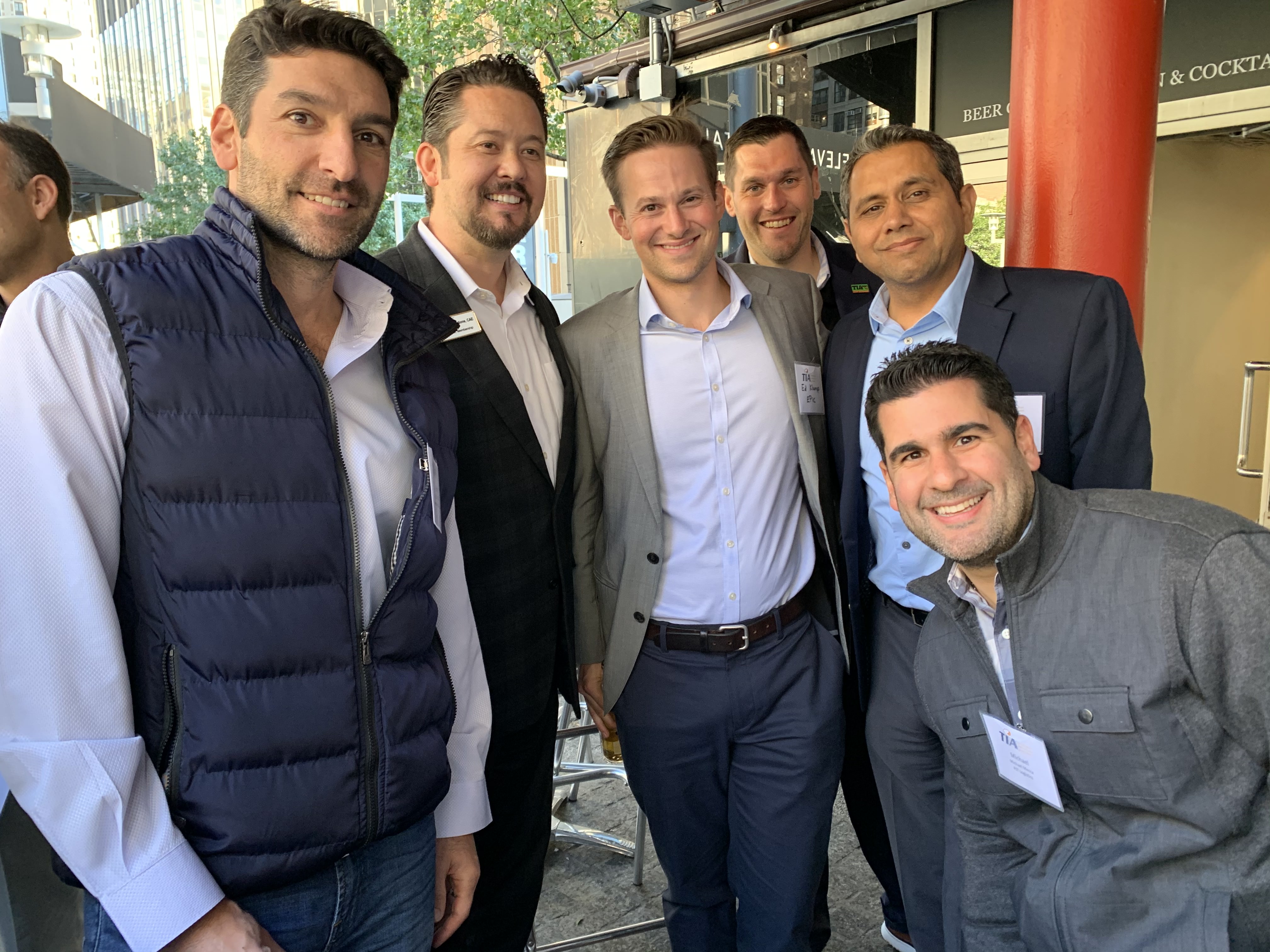
Further from Mecca’s perspective, “I really enjoyed myself on Friday night. I met great professionals that all share the same experiences, problems, headaches, stress, obstacles, and enjoyment that I experience each day in the wonderful world of transportation brokerage. I got to collaborate with companies I knew of their name but never got to understand how similar we are to each other. Also, how we can assist each other in business being from New York/ New Jersey whether it may pertain to resources or even on the customer level. If it wasn’t for the TIA and their networking event; these great experiences would never have happened. Glad to be part of the event and a TIA member. Thank you, Chris and Matt, for the time and personal attention. You guys definitely knocked it out of the park. It was casual, personable and comfortable to just be ourselves. I had a great time! I look forward to more fun events from the TIA.”
Matt and I look to continue this success throughout this great country with other TIA Member Plug-in Events. Keep an eye out for the next city, it may be yours.
If you have any questions or want to learn more about TIA’s Advocacy efforts, please contact Chris Burroughs ([email protected]).
Chris on the Hill: Planning for the Future

I am so blessed to have three healthy and amazing children who are five, three, and 4-months old. Since they are all under the age of six and obviously not dating or driving yet, the most pressing issue that keeps me up at night is doing my best to build some inheritance. Personally, I utilize several retirement tools including a traditional 401(k) and a Fixed Index Life Insurance Policy to protect my wife and I when we retire as well as grow our inheritance for our children. At this very moment, Congress is getting ready to pass legislation that would drastically change the game for “stretch” IRAs commonly used for retirement planning.
A stretch IRA is an estate planning strategy that extends the tax-deferred status of an inherited IRA when it is passed to a non-spouse beneficiary. This allows for continued tax-deferred growth over the inheritor’s lifetime and potentially over several generations. Under current law, non-spouse heirs can “stretch” or extend the taxable distributions of an inherited IRA over their lifetime, allowing them to continue earning passive income on the IRA while also spreading out the tax they must pay.
On May 23, 2019, the House of Representatives passed the Setting Every Community Up for Retirement (SECURE) Act (H.R. 1994). The bill includes a section on stretch IRAs that could have severe consequences for people who plan to leave their IRA as an inheritance to their loved ones.
Specifically, the SECURE Act would limit the stretch period to 10 years, meaning the account must be distributed within 10 years and the individual who inherited the IRA would have to pay tax on the entire IRA when it is taken out. A similar bill in the Senate, the Retirement Enhancement and Savings Act (RESA) (S. 972), would allow the first $400,000 of an inherited IRA to stretch, while the remainder would need to be distributed within five years.
Both bills amount to a tax increase on hard-working people who planned to leave their children with inheritance through an IRA. They also significantly reduce the amount of potential investment income those inheritors can earn while increasing their upfront tax burden.
The driving force behind this legislation is insurance companies. They envision if stretch IRAs are not as appealing, people will naturally gravitate towards an annuity. In talking with many industry experts, this may not be the case as costs associated with annuities are generally much higher. These experts believe if these changes were to occur, people would shift to living wills or other similar retirement planning tools that continue to protect the value of the money being left for their beneficiary.
Stay tuned in November for details on an upcoming free webinar for TIA members that addresses this issue in much more detail and will provide answers and possible solutions for those folks that will be impacted by this harmful provision.
If you have any questions or want to learn more about TIA’s Advocacy efforts, please contact Chris Burroughs ([email protected]).
Chris on the Hill: Rescission – On the Horizon

There is not a typo in the title of this week’s Chris on the Hill article, I am talking about an upcoming rescission not a recession in the American economy. I will leave the topic of a pending recession to TIA’s economist Noel Perry to comment on. Our nation’s critical infrastructure and transportation projects could, unfortunately, see a major rescission or revocation of invaluable funds on July 1, 2020, if Congressional action is not taken.
The Fixing America’s Surface Transportation Reauthorization Act or the FAST Act contains a provision (Section 1438) on page 122 of the bill text that states that on July 1, 2020, $7.6 billion of the unobligated balances of funds apportioned among the States will be permanently rescinded. There are a few exemptions from the rescission like funds sub-allocated by population to metropolitan areas, safety programs, and the $639 million per year National Highway Performance Program funding.
The FAST Act rescission applies to all States and the District of Columbia based on that State’s share of the unobligated balances. What does that mean in layman’s terms? Essentially, the rescission rewards States that can efficiently and swiftly spend the money they are allocated. Because of State regulations and bureaucratic red tape, spending money quickly is not easily done.
In a nation that desperately needs dollars to fix and improve our crumbling infrastructure and transportation projects, why would Congress include this provision into a Highway Reauthorization Bill? The answer is somewhat simple, it was a ploy by Congressional leaders to keep the overall price tag of the legislation down and try and make this legislation budget neutral. It helped in that aspect to a degree, but at the determinant of our nation’s projects.
Now that the pending rescission is on the horizon, Congressional leaders are scrambling because reality is coming to fruition and States are feeling the pinch and the pending threat is hampering their ability to plan for future projects because extreme uncertainty in budgeting. Recently, Chairman Barrasso (R-WIY) and Ranking Member Carper (D-DE) of the Senate Environment and Public Works Committee who has jurisdiction over construction and maintenance of our highways, wrote a leader to Senate Majority Leader McConnell (R-KY) and Minority Leader Schumer (D-NY) stressing the need for Congress to repeal this misplaced provision as soon as possible.
There has also been legislation introduced in the House and the Senate to repeal Section 1438 of the FAST Act, but this would likely need to move through a highway reauthorization bill or a funding bill. This seems to be a bi-partisan effort and for the good of the nation, I expect this to eventually get repealed, but as with most things, time is of the essence to ensure that States have the appropriate planning time to get these projects mapped out and completed.
If you have any questions or want to learn more about TIA’s Advocacy efforts, please contact Chris Burroughs ([email protected]).
Chris on the Hill: USMCA Done Deal or DOA?

One of the hottest issues being discussed right now on Capitol Hill is the United States-Mexico-Canada Agreement or USMCA. The trade agreement being dubbed “NAFTA 2.0” was signed by the three countries last year but has not been approved by Congress yet and uncertainty continues to surround this agreement leading folks (including myself) to ask is this deal going to get done or is it dead on arrival?
Trade with Canada and Mexico has quadrupled in the past 25-years and nearly reached $1.3 trillion in 2017 and according to our Commerce Department, Canada and Mexico buy more than one-third of the U.S. merchandise exports. Additionally, the current trade between our three nations supports millions of American jobs, drives our export growth, is vital for manufacturers, provides essential business for farmers and ranchers, boost small businesses throughout the U.S. and enhances the service economy. All in all, a trade deal with Canada and Mexico is vital to our nation and the future success of it.
The USMCA would modernize the rules for trade between Canada and Mexico and the U.S. with state-of-the-art provisions. These provisions include; increasing market access, create digital trade and bolster a digital economy, provide strong protections for intellectual properties, increase agricultural standards, modernizes customs procedures, and raises the bar on enforcement for all chapters, including labor and the environment.
So, what’s the holdup? Democrats have voiced concerns about the labor, environmental and pharmaceutical standards of the agreement, in addition to enforcement in general. Speaker of the House Nancy Pelosi (D-CA) remains noncommittal at the moment and hasn’t spoken about the timing of possibly acting on the agreement. The USMCA remains a top priority for President Trump as we move closer and closer to the Presidential election in 2020. Additionally, there are a lot of border-state Democrats that want to see this agreement done as soon as possible as well, especially prior to their re-election campaigns. Speaker Pelosi has made several comments along with Presidential candidate Senator Elizabeth Warren (D-MA) that the “stalling” of acting on this agreement has nothing to do with giving President Trump a victory prior to the election, because an agreement is essentially for American businesses and American workers, but the fact remains there has been no movement.
I know both sides are still talking about this agreement and trying to find the right path forward, but the reality is time is running out. Many experts agree, that if no deal is done within 30-days there will be no deal. I personally remain optimistic and think this important trade deal gets done before the end of the year. The American people need this trade deal ASAP, as the President continues to deal with the trade war with China, which hopefully gets resolved soon as well.
If you have any questions or want to learn more about TIA’s Advocacy efforts, please contact Chris Burroughs ([email protected]).
SENATE APPROPRIATIONS COMMITTEE ADVANCES THUD BILL
On September 19, 2019, the Senate Committee on Appropriations approved the Transportation, Housing and Urban Development (THUD) fiscal year 2020 spending bill. The measure – which provides funding to improve transportation infrastructure development, housing assistance, and community development – was approved by a vote of 31-0. TIA is happy to report that the controversial CSA Policy Rider that was included in the House bill was NOT included in the Senate version.
TIA has spent a lot of political capital and time lobbying against this provision. The fight is not over as the House approved bill contains the CSA language, but it makes it a lot easier if this bill makes its way to a conference committee or an omnibus package to not have it in the Senate bill. We will continue to make sure this provision does not become law.
The bill did contain a section that prohibits the FMCSA from using funds to enforce the ELD mandate on livestock and insect carriers, essentially continuing this exemption. This provision is not controversial and bipartisan.
Other key highlights in terms of transportation include:
Transportation –$86.6 billion in total budgetary resources for the U.S. Department of Transportation (DOT) for FY2020, which is $167 million above the FY2019 enacted level. The total funding for DOT includes $25.3 billion in discretionary appropriations and $61.3 billion in obligation limitations. Funding is prioritized for programs that improve the safety, reliability, and efficiency of the transportation system.
- BUILD Grants – $1 billion for Better Utilizing Investments to Leverage Development (BUILD) grants.
- Highways – $46.3 billion in obligation limitation from the Highway Trust Fund for the Federal-aid Highways Program, consistent with the FAST Act. In addition, the bill includes $2.7 billion discretionary appropriations for highway programs, of which $1.25 billion is for the Surface Transportation Block Grant funds and for the elimination of hazards at railway-highway grade crossings, and $1.25 billion is for bridge repairs in small states with high rates of bridges not in good condition. The bill also provides $100 million for the Appalachian Development Highway System and $100 million for the Nationally Significant Federal Lands and Tribal Projects grant program. The bill maintains flexibility for State Departments of Transportation to repurpose some stagnant project funding for current infrastructure projects.
- Aviation – $17.7 billion in total budgetary resources for the Federal Aviation Administration (FAA), which fully funds all air traffic control personnel, including more than 14,000 air traffic controllers, and more than 25,000 engineers, maintenance technicians, safety inspectors, and operational support personnel. The bill fully funds the Essential Air Service program for all communities as well as the Contract Towers program.
- Aviation Safety: The bill increases funding for aviation safety by $31.8 million above the budget request, requires FAA to respond to all Inspector General and National Transportation Safety Board investigations and audits, and requires FAA to finalize its rulemaking on safety management systems for aircraft manufacturers.
- Rail – $2.8 billion for the Federal Railroad Administration (FRA). This includes $2 billion to Amtrak for the Northeast Corridor and National Network, continuing service for all current routes. The bill also provides $255 million for the Consolidated Rail Infrastructure and Safety Improvement grants program, $300 million for Federal-State Partnership for State of Good Repair grants, and $2 million for Restoration and Enhancement grants.
- Transit – $13.0 billion for the Federal Transit Administration (FTA). Transit formula grants total $10.1 billion, from the Mass Transit Account of the Highway Trust Fund, consistent with the FAST Act. In addition, $560 million is provided from the general fund for transit infrastructure grants. The bill provides a total of $1.978 billion for Capital Investment Grants (CIG), fully funding all current “Full Funding Grant Agreement” (FFGA) transit projects, as well as new projects that have met the criteria of the CIG program.
- Maritime – $904 million for the Maritime Administration to increase the productivity, efficiency, and safety of the nation’s ports and intermodal water and land transportation. This includes $300 million for the Maritime Security Program, $91.6 million for the Port Infrastructure Development Program, and $300 million for the third National Security Multi-Mission Vessel. This training ship is essential for the State Maritime Academies to provide the nation with a strong merchant marine workforce.
- Safety – The legislation contains funding for the various transportation safety programs and agencies within the U.S. Department of Transportation. This includes $972 million in total budgetary resources for the National Highway Traffic Safety Administration and $679 million for the Federal Motor Carrier Safety Administration. The bill continues to delay electronic logging device enforcement for livestock and insect haulers. The bill also includes $278 million for the Pipeline and Hazardous Materials Safety Administration to help address safety concerns related to recent pipeline and crude oil by rail accidents.
If you have any questions, please contact TIA Advocacy ([email protected], 703.299.5700).











